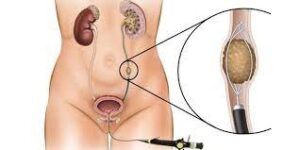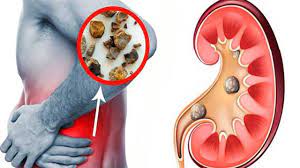Welcome to our content about Urinary System Stone Disease Surgery. Urinary tract stone disease surgery is a common procedure that can be used to treat various types of stones in the urinary tract. The surgery involves removing the stones and any associated bacteria or infection while preserving as much of the surrounding urinary tract as possible. This type of surgery is often successful in treating Stone Disease, but there are some potential risks, so it is important to discuss these with your surgeon before undergoing the procedure.
Stone disease is a problem with the urinary system that can cause problems with urination. There are different types of stone disease and often different treatments work best for different people. In some cases, surgery may be needed to remove the stones.
What is the Urinary System
The urinary system is responsible for removing waste and excess fluid from the body. The system includes two kidneys, two ureters, bladder and urethra. The kidneys are bean-shaped organs that filter the blood to produce urine. Urine moves from the kidneys through the ureters to the bladder. The bladder stores urine until it is ready to be passed through the urinary tract.
Stones can form anywhere in the urinary system. Stones in the kidney are called nephroliths or kidney stones. Stones in the ureter are called ureteroliths or ureteral stones. Stones in the bladder are called cystoliths or bladder stones. Stones in the urethra are called prostatoliths or prostate stones.
Stones can cause pain and block the flow of urine.
The urinary system is responsible for removing waste and excess fluid from the body. The system includes the kidneys, ureters, bladder and urethra. Stones can form anywhere in the urinary system. Surgery is needed to remove stones that cause problems.
How is Urinary System Treatment
There are a range of urinary tract stone disease surgery options. The most common is a procedure called percutaneous nephrolithotomy (PCNL). PCNL uses imaging guidance to insert a small telescope and surgical instruments through a small incision in the back to break and remove the stones.
Another option is shockwave lithotripsy (SWL), which uses high-energy sound waves to break stones. This option can be used if the stones are in the kidney or ureter. SWL can also be used to treat larger stones in the bladder.
Some people may need surgery to remove the entire urinary tract (called a cystectomy).
Surgical treatment of urinary tract stone disease depends on the location and size of the stones. Small stones can be removed using a scope inserted through the urethra (the tube that carries urine from the bladder out of the body). Larger stones may require surgery with a larger incision in the abdomen.
How to Treat Urinary System Stones
Stone disease of the urinary tract is a common problem. Stones can form anywhere in the urinary system, from the kidneys to the bladder. The type of surgery needed to treat the stone depends on its location and size.
If the kidney stone is small and not lodged in the ureter, your doctor may recommend that you take painkillers and drink plenty of fluids until the stone passes. If the kidney stone is large or lodged in the ureter, you will need surgery to remove it.
There are various types of surgery to remove kidney stones. The most common type is called percutaneous nephrolithotomy (PCNL). In this surgery, your surgeon makes a small incision in your back and inserts a telescope called a nephroscope into your kidney to find and remove the stone.
In most cases, urinary tract stone treatment will involve surgery. The most common surgical procedure to remove stones is called percutaneous nephrolithotomy. This procedure is performed through a small incision in the back and uses a special scope to find and remove the stones. Another common surgery for urinary tract stones is ureteroscopy. This procedure uses a thin, flexible tube that is inserted through the urethra and passed into the bladder to find and remove stones.


